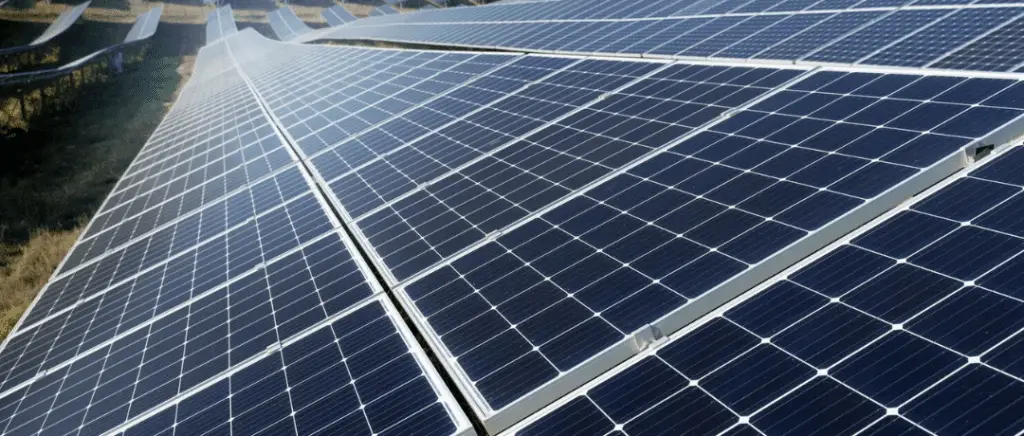Monday to Friday, 9am to 12.30pm and 2pm to 7pm
Typical lifetime of photovoltaic panels
Understanding the lifespan of photovoltaic panels
The photovoltaic panels are long-term investments that convert solar energy into electricity. To fully understand their lifespan, it is crucial to explore the factors that influence their longevity and the industry standards that govern their performance.
What is the average lifespan of photovoltaic panels?
La average lifetime of a photovoltaic panel is estimated between 25 and 30 years old. According to the IEA, the majority of photovoltaic panels maintain approximately 80% of their initial efficiency even after 25 years of use. Modern technologies, high-quality materials and improvements in manufacturing processes contribute to the durability and robustness of photovoltaic panels, which means that some models can last even longer, with minimal degradation.
What factors influence the longevity of photovoltaic panels?
There are a number of factors that determine the lifetime of a photovoltaic panel, and understanding these is essential to maximising the efficiency and yield of the panels:
- the quality of materials and workmanship,
- extreme weather conditions,
- salinity and humidity,
- regular servicing and maintenance,
- periodic inspections,
- and the latest technology and innovations
Damage to photovoltaic panels
The degradation of photovoltaic panels is a normal process in which the efficiency of solar cells decreases slightly each year. On average, photovoltaic panels lose approximately 0.5% to 1% of their efficiency per year. This degradation is taken into account in the warranties provided by manufacturers. High-quality photovoltaic panels show an annual degradation of only 0.3%.
Recent technologies and materials aim to minimise this degradation. New-generation solar cells use more stable materials that are more resistant to natural elements.
Importance of guarantees
The warranties provided by manufacturers are essential for assessing the potential lifespan of photovoltaic panels. Most manufacturers offer two types of warranty:
- performance guarantee,
- the product guarantee.
Also read → Should you install photovoltaic panels for your charging points?
Profitability and efficiency of photovoltaic panels
Analysis of the efficiency and yield of photovoltaic panels
What is the efficiency of photovoltaic panels?
The efficiency of photovoltaic panels refers to the panels' ability to convert sunlight into usable electricity. It is expressed as a percentage and represents the proportion of solar energy that is transformed into electrical current. The higher the percentage, the more efficient the panel.
How is the yield of photovoltaic panels measured?
The yield of photovoltaic panels is a measure of the total amount of electricity produced by a photovoltaic panel over a given period. It is often expressed in kWh and depends on a number of factors, including the size of the panel, the amount of sunlight and the geographical position of the installation.
Return on investment and profitability
The efficiency and yield of photovoltaic panels have a direct impact on their profitability and return on investment. More efficient panels produce more electricity, reducing the time needed to recoup the initial costs. ROI can be estimated by comparing the total cost of the solar installation with the savings made on electricity bills. A more efficient installation means a faster return on investment and greater savings in the long term.
Depreciation period for photovoltaic panels
One of the crucial aspects of installing photovoltaic panels is the payback period, which is the time needed to recoup the initial investment through savings on electricity bills.
What is the amortisation period?
The payback period for photovoltaic panels is the time required for the savings generated by the production of solar energy to equal the initial cost of the installation. This is the point at which the investment starts to generate a net profit.
The depreciation period depends on a number of factors:
- the cost of photovoltaic panels,
- available subsidies,
- the price of local electricity,
- the efficiency of the system installed.
A short amortisation period means that the investment becomes profitable more quickly, which is a key indicator for owners and investors.
To calculate the amortisation period, you need to assess the total cost of the installation and the annual savings made thanks to the production of solar energy. This cost takes into account :
- the purchase of photovoltaic panels,
- installation costs,
- and additional equipment (inverters, mounting systems).
The average cost of a residential solar installation is estimated at between €10,000 and €20,000depending on the size of the system and the region.
The savings depend on the amount of electricity produced by the photovoltaic panels and the local electricity price. For example, in a region where the cost of electricity is €0.20/kWh, an installation producing 4,000 kWh per year will save 800 per year.
Impact of subsidies and tax incentives
Subsidies and tax incentives play a significant role in reducing the amortisation period for photovoltaic panels. These incentives can take several forms.
- the bonus MaPrimeRénov reduces the initial cost of installation.
- feed-in tariffs guarantee a fixed price for the electricity produced by photovoltaic panels
- some regions offer specific subsidies to encourage the adoption of solar energy
Read also => Photovoltaic panels: a sustainable and profitable investment?
Optimising the lifespan of photovoltaic panels
The importance of proper installation and regular maintenance
Orientation and tilt: maximising exposure to the sun
Careful installation of photovoltaic panels starts with optimum orientation and inclination. These parameters are essential for capturing the maximum amount of sunlight, a prerequisite for efficient electricity production. The panels should be oriented according to latitude and seasonal sunshine. Adjusting the tilt angle according to the best practice recommended for your region will maximise the capture of solar energy throughout the year.
Fasteners and supports: the basis of durability
The use of durable materials for brackets and fixings is crucial to ensure that panels remain securely in place, even in high winds or heavy snowfall. Professional quality fixings not only increase the safety of the installation, but also extend the life of the panels, reducing the risk of unplanned maintenance.
Electrical connections: guaranteeing performance and safety
Electrical connections must be made precisely and in accordance with safety standards. Incorrect connections can reduce the efficiency of photovoltaic panels and pose serious risks, including short circuits and fires. Using certified installers to make the electrical connections is essential.
Regular maintenance: A key factor in long-term efficiency
Panel cleaning: maintaining efficiency
Regular maintenance of photovoltaic panels, particularly cleaning, is crucial to maintaining optimum performance. The build-up of dust, debris or leaves on the panels can reduce efficiency by partially blocking sunlight. We recommend cleaning the panels twice a year to ensure maximum efficiency.
Inspecting connections and supports: preventing problems
Regular inspection of electrical connections and supports is just as important as cleaning to extend the life of photovoltaic panels:
- Annual inspection of electrical connections by a professional,
- Check fasteners to ensure they are in good condition.
Read also => Impact of summer on electric batteries: what professionals need to know
Conclusion
Investing in solar panels is a strategic decision to reduce energy costs and contribute to the transition to renewable energies. Although their typical lifespan is 25 to 30 years, the profitability of these systems depends heavily on the quality of the installation, regular maintenance and technological innovations.
If you are interested in the installation of photovoltaic panelsBeev can support your project and help you make the energy transition a reality.
Why not install photovoltaic solar panels?
With Beev, get a turnkey solar panel solution to reduce your electricity consumption.
































